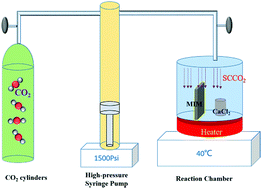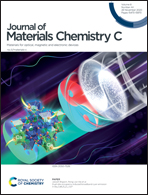A supercritical removal method: the rapid elimination of impurities in polymethyl-methacrylate at near room temperature and a mechanism investigation of insulating property improvements†
Abstract
Polymethyl methacrylate (PMMA) has been widely applied in the semiconductor field due to its excellent specialties of transparency and durability, but impurities in the polymerization process result in electric leakage and are tough to remove even during high-temperature baking. In this study, a near-room-temperature supercritical CO2 fluid (NRT-SCF) treatment method is adopted to purify PMMA and improve its insulating properties. Residual solvent and initiators in PMMA films can be easily taken away by supercritical CO2 fluid at near-room-temperature to enhance the electric characteristics. An Al/PMMA/Mo metal–insulator–metal device is fabricated to investigate the improvement in PMMA quality. The leakage current of the device can be decreased more than 10-fold and its capacitance can also become more stable after NRT-SCF treatment. The current conduction mechanism is transformed from Hopping conduction to Schottky emission. Fourier transform infrared spectroscopy test results confirmed that defects like butyl acetate and benzoyl peroxide in PMMA films have been reduced a lot based on material analysis. The findings of this study lead to the hopeful prospect that supercritical CO2 fluid technology can greatly promote the insulating properties of PMMA and offer more potential applications for PMMA in wider fields.



 Please wait while we load your content...
Please wait while we load your content...